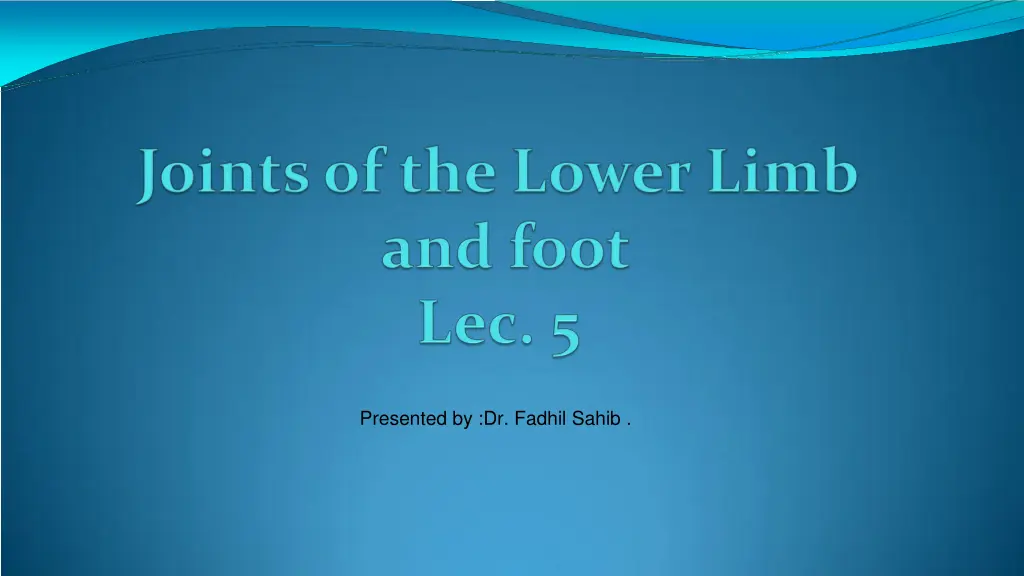
Understanding Knee Joint and Associated Articulations
Explore the anatomy of the knee joint, including its structure and function, along with details on proximal and distal tibiofibular joints. Learn about different types of articulations and synovial joints in the body to enhance your knowledge of musculoskeletal system.
Download Presentation

Please find below an Image/Link to download the presentation.
The content on the website is provided AS IS for your information and personal use only. It may not be sold, licensed, or shared on other websites without obtaining consent from the author. If you encounter any issues during the download, it is possible that the publisher has removed the file from their server.
You are allowed to download the files provided on this website for personal or commercial use, subject to the condition that they are used lawfully. All files are the property of their respective owners.
The content on the website is provided AS IS for your information and personal use only. It may not be sold, licensed, or shared on other websites without obtaining consent from the author.
E N D
Presentation Transcript
Knee joint The knee joint is the largest and most complicated joint in the body. :Articulation 1_Above are the rounded condyles of the femur; below are the condyles of the tibia and their cartilaginous menisci 2-in front is the articulation between the lower end of the femur and the patella.
Articulation: Articulation is between the lateral condyle of the tibia and the head of the fibula . Type: This is a synovial, plane, gliding joint.
Distal Tibiofibular Joint Articulation: Articulation is between the lower end of the tibia and the lower end of the fibula . Type: The distal tibiofibular joint is a fibrous joint. Capsule: There is no capsule.
Synovial joints are subdivided based on the shapes of the articulating surfaces of the bones that form each joint.
Plane joint (arthrodial joint, gliding joint, plane articulation) is a synovial joint which, under physiological conditions, allows only gliding movement.
The bones of the foot: 1 Tarsal bones 2 The metatarsals Tarsal 3 The phalanges.
Tarsal Bones: The tarsal bones are: 1 The calcaneum. 2 The talus. 3 The navicular. 4 The cuboid. 5 The three cuneiform bones. .
Calcaneum: The calcaneum is the largest bone of the foot and forms the prominence of the heel. Talus: The talus articulates above at the ankle joint with the tibia and fibula. It possesses a head, a neck , and a body. Cuneiform Bones: The three small, wedge-shaped cuneiform bones.
Metatarsal Bones and Phalanges: The metatarsal bones and phalanges each had a head, shaft, and base. Each toe has three phalanges except the big toe, which possesses only two.
:Ankle Joint Articulation: Articulation is between the lower end of the tibia, the two malleoli, and the body of the talus. Type: The ankle is a synovial joint.
Tarsometatarsal joint: Articulation: Between tarsal and metatarsal bone Type: synovial joints . The arches of the foot: The arches are maintained by the shape of the bones of the foot, the ligaments and muscles, particularly of the plantar surface.
Arch of foot: 1 Normal arch 2 High arch 3 Flat arch






















